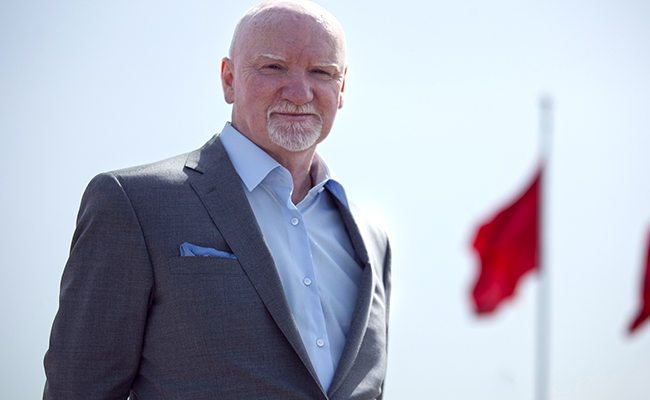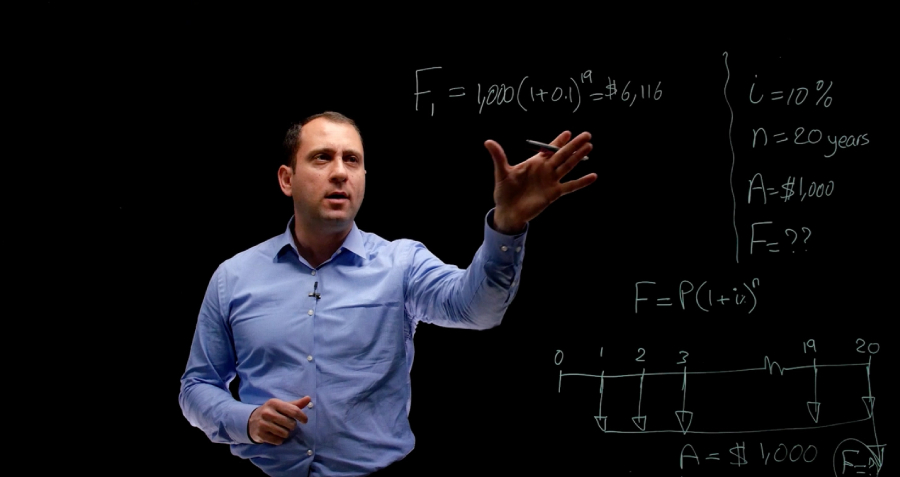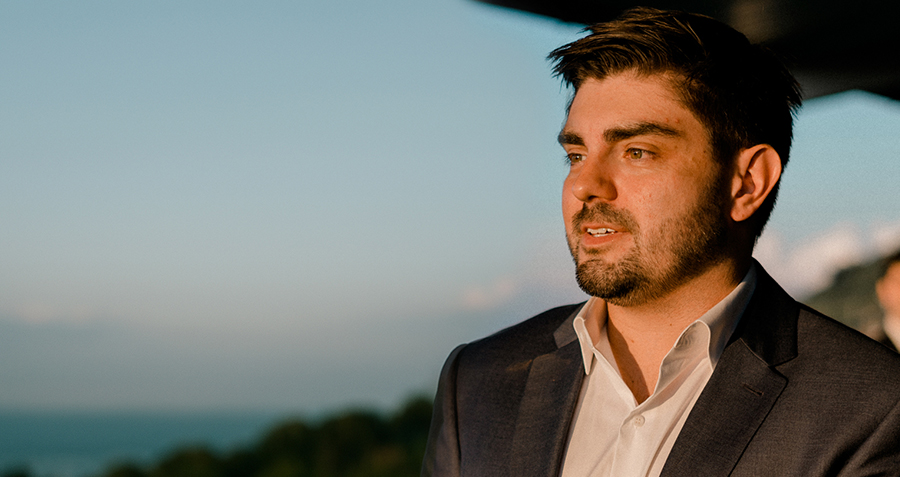An interview with Sir Tom Hunter, noted entrepreneur, philanthropist and Scotland’s first billionaire.
Sir Tom Hunter’s story is an inspiring one. The son of a grocer in a small mining village in Scotland, he started a business selling sneakers from the back of a van. From humble beginnings, he went on to create sportswear retail giant Sports Division. Over the years, his business empire grew to 250 stores. He eventually sold off Sports Division to JJB Sports and he gained 252 million pounds from the transaction. It was perfect. He could have retired with his riches, and lived the rich life. But a meeting with Vartan Gregorian, head of the Carnegie Foundation in New York, changed things, and Sir Tom decided to put his riches to a good cause. And so in 1998, he set up the Hunter Foundation to fund projects in education and poverty alleviation.
Sir Tom’s model of philanthropy is different from conventional charity–something he calls ‘venture philanthropy’. In this interview (video below), he elaborates on his unique journey from an entrepreneur to philanthropist, and his model of philanthropy:
Q. You’ve had a rather interesting journey as an entrepreneur. What are some of the lessons that you learned from your early life and how have they shaped you and guided your journey as a businessman?
A. (I was) brought up in a small village in Scotland–which had less than 5,000 people. My father was the local grocer. So from an early age, hard work was very much part of my education. But also my father taught me that we were working in a local community where we were taking money from the community and, therefore, we had to put something back into that community if we were going to survive. So hard work, sense of communitywere some of the early parts of (my) education.
Q. Not everyone is born with a silver spoon.
A. No, in Scotland not many are born with a silver spoon frankly.
Q. When you visited CKGSB some months ago you gave a talk, and one of the most telling statements you made that day, and one that has stayed with me ever since is: ‘I did not want to be the richest man in the graveyard.’ What triggered that thought?
A. My journey has been a pretty incredible (one) in terms of starting from nothing and then selling the first business at a relatively young age of 37. Therefore, once I had sold the business, which was the only thing I had ever done, I had plenty of money in the bank, but nothing really to do. So I had to take time to educate myself to try and work out what was the purpose of it all and what I was gonna do. Life wasn’t over then–it was only really beginning. And I began to seek out people around the world who maybe had had a similar journey, what they had done, trying to learn from others’ experience. One of the most influential persons I met was Vartan Gregorian, president of the Carnegie Corporation of New York (Editor’s note: The Carnegie Corporation is a grant-making institution established by noted industrialist and philanthropist Andrew Carnegie in 1911). Andrew Carnegie had become of real interest to me. He was a fellow Scot who left Scotland penniless, went to America and became the richest guy in the world. But he decided that he was going to put his great wealth to a purpose. Vartan Gregorian challenged me to say that this wasn’t really my money, I was a custodian of this money.
This is quite a challenging thing to be told when you’ve worked so hard for it. But, once we developed this, I just decided that yeah, I wanted to put the money to work, but while I was still alive. I think quite a few people leave legacies, but I was having—and I am having—too much fun investing for the common good. Once you’re dead, you can’t have that fun, so being the richest man in the graveyard seems a waste.
We came to a couple of decisions coming out of that education: one, we wanted to continue to make wealth, but two, that the wealth was going to be invested through our foundation and we weren’t gonna leave great wealth to our children either. I think Warren Buffet summed it up the best when he said, ‘Leave your kids enough that they do something, but not too much that they do nothing,’ And that’s a balance that me and my wife are always trying to find.
“Being the richest man in the graveyard seems a waste”
Q. Let’s talk about the difficulty you might have had personally in trying to make this transition. So how does one really, you know, change from becoming a successful businessman whose life is all about making money, to a successful philanthropist whose life is about spreading goodwill and cheer?
A. I can only tell you my personal experience. Once when I was growing up, I set myself goals, and the goals were frankly quite material goals. I wanted a certain type of car, a certain type of house and then a certain type of boat, but once you fulfill yourself with these things, you’ve got to have a purpose and you gotta have something that’s going to fulfill you. You quickly understand that it isn’t the money that’s important, it’s what you actually do with it. People ask me, ‘Can money buy you happiness?’ My answer is, ‘It can, if you give it away.’
Q. So did this challenge your existing mental models?
A. When you’re a first generation wealth creator, you’re driven by the insecurity of not having anything and then suddenly you come into abundance and it’s a bit strange, nice strange. I’m not complaining. So you’re worried, ‘Oh could it all disappear? Could something happen?’ Your first instinct is to hang onto it, but you know, as I educated myself, I understood that there was something better to do with it.
Q. Some of it did disappear. How did you view that failure?
A. You learn a lot more from failure than you do (from) success. The financial crisis that hit us in Europe, yeah, I lost a great deal of wealth through it, but that wasn’t the important thing. The important thing was what did we learn and what lessons are we putting into practice now to make sure that we make the most of that learning? That was really important, and it also made us look back at the foundation and double our efforts to make sure we were getting value for money.
Q. Let’s talk about your version of philanthropy–something you call venture philanthropy. What does that really mean and what are you trying to achieve?
A. I don’t really like the word charity. The people that we’re working with and are trying to help, they don’t really want handouts, they want and need ‘hand-ups’, so we’re a kind of catalyst to help people help themselves. The only thing we really know about is business, and therefore, what we’re trying to do is to help people with sustainable economic development. In countries like Rwanda, we’re helping build a food oil processing plant. We’re investing not for profit, but we have for-profit investors alongside us because if it’s going to be sustainable, it needs to be for-profit. Profit is not a dirty word, profit makes it sustainable. Therefore we mix not-for-profit and for-profit investors and we’re finding that an interesting model, and it’s something which hopefully is going to be very successful. The for-profit investor gets out of it what he wants, which is profit, and (what) we get out of it is that we’re helping people help themselves out of poverty. So it’s a win-win.
Q. Does this intersect in some ways with social entrepreneurship, an idea that is very popular nowadays?
A. I guess you could say our investment is through social entrepreneurship, but we don’t mind mixing it with other entrepreneurs.
Q. So where does the difference lie?
A. The difference lies in what we do with the profit. The for-profit investor takes his profit out and he can do whatever he wants with it, which is fine. We decide to invest (our profit) back in the country.
Q. What are some of your most successful philanthropic projects?
A. That one in Rwanda, once it’s fully up and running. Running at (full) capacity, that has the ability to touch a million lives in a country of only 13 million. That’s going to be a fantastic thing with people helping themselves. That’s one that we’re really proud of.
Q. One of the things you really stress upon is measuring the success or failure of such projects, which is something that not a lot of people in philanthropy do. Is there a good way of measuring impact in philanthropy?
A. It’s like any other investment, and we do see it as an investment. We agree upfront what success looks like. Success for us in the food-oil processing plant is one that’s got to be sustainable, and two, is how many lives it touches positively. Those are easily measurable key performance indicators. In any investment that we put in, we agree to these things upfront and we measure against them.
Q. A lot of people who get into charity, do it because it makes them feel good about themselves and it isn’t necessarily changing lives as it should. How do you go about bringing in that discipline or rigor into this field?
A. I’m not someone who’s gonna preach why people should get involved with philanthropy. I’m very much a pragmatist and if people want to do it for whatever reason, that’s okay with me.
Q. A lot of the philanthropic work being done in Africa often comes under criticism. A lot of people say that these are really ‘first world solutions’ to ‘third world problems’, and the best solutions lie in something that’s homegrown, that people buy into. How do you kind of get around this unique challenge in Africa?
A. In Africa, we partnered with former President Bill Clinton. When we started out in this journey, he gave me a piece of advice, saying, ‘Never forget, Tom, that we are guests in this country.’ That stuck with me. So when we work in the likes of Rwanda, we’re very aware of that, and we’re very aware that we’re helping the people in the country help themselves. We’re not imposing our beliefs or what we think is best. It’s very much done in conjunction with the people, not to the people, and that’s a really important distinction for us. But having partners like President Clinton helps us in our education to get these things right.




















